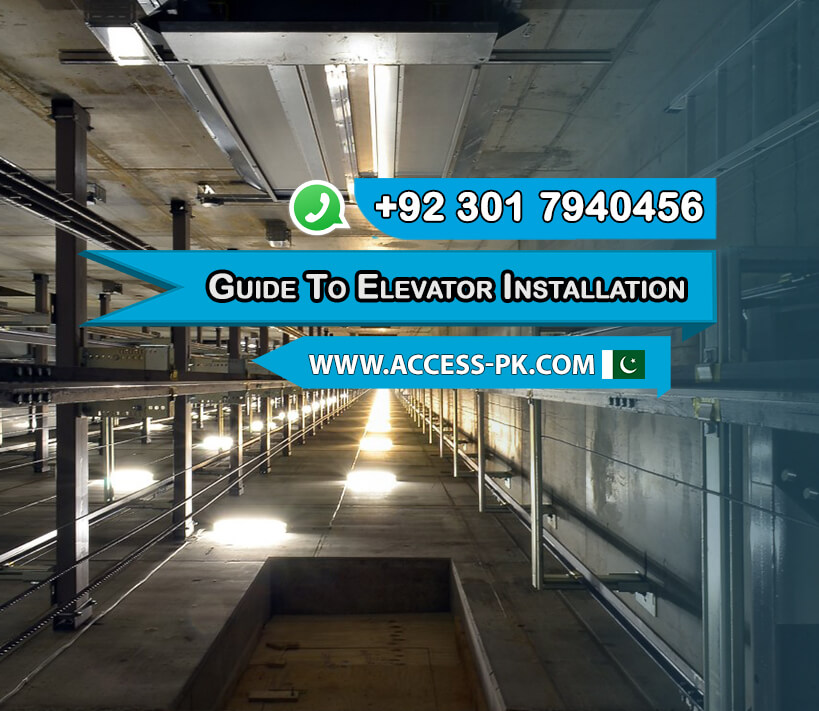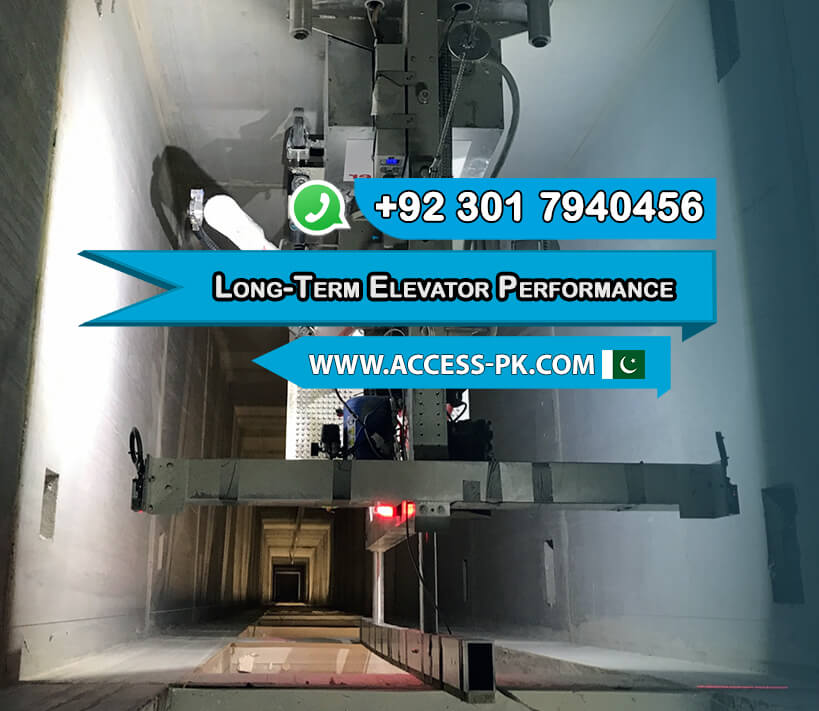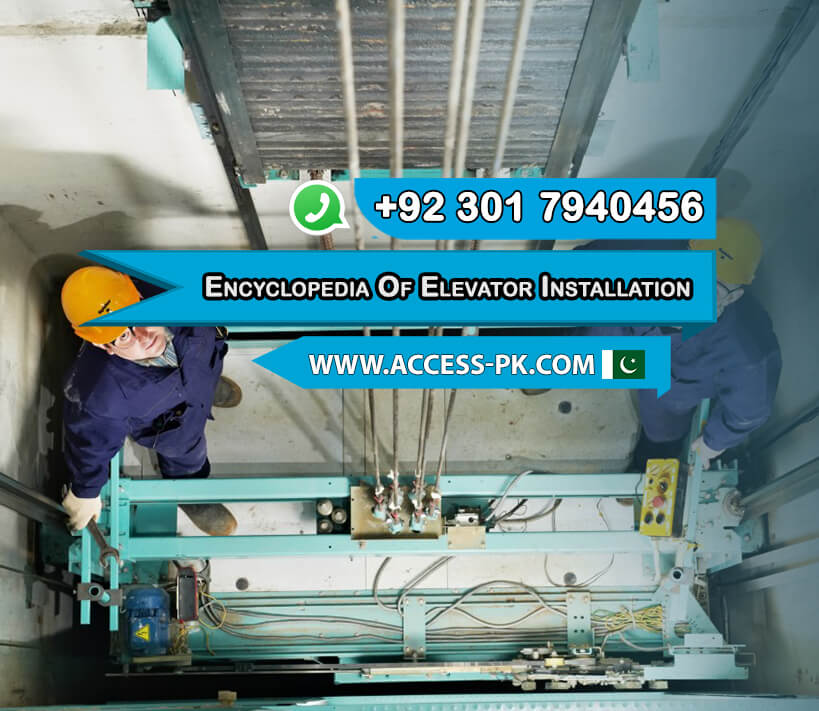Access Technologies, owned by Imran Rafi, offers a comprehensive Encyclopedia of Elevator Installation, filled with modern techniques and effective solutions. This resource helps professionals understand each step of the installation process, ensuring smooth and efficient operations. From selecting the right Elevator system to troubleshooting common issues, the encyclopedia covers it all. The focus is on providing practical insights that make the installation process easier, saving time and reducing errors. With detailed instructions and real-world examples, this guide is essential for anyone involved in the Elevator industry.
The Encyclopedia of Elevator Installation emphasizes using cutting-edge technology and innovative methods to ensure top-notch performance. It introduces readers to advanced techniques like gearless traction and machine-room-less elevators, which improve efficiency and save space. Additionally, it highlights the importance of proper planning and preparation for a successful installation. By following these solutions, installers can optimize safety, reduce costs, and extend the lifespan of the Elevator systems. Each technique and solution provided in the encyclopedia has been tried and tested, offering reliable outcomes for various types of buildings.
Moreover, the Encyclopedia of Elevator Installation addresses challenges and offers practical solutions for common issues in the field. Whether dealing with space limitations or complex building structures, this resource guides users through every obstacle. It also explains the significance of adhering to safety standards and regulations, ensuring compliance and minimizing risks. By focusing on both innovative and traditional methods, the encyclopedia offers a balanced approach, making it a valuable tool for both novice installers and experienced professionals in the Elevator industry.
Get Free Quotes: 03017940456Overview of Modern Elevator Installation Techniques

The Encyclopedia of Elevator Installation provides a detailed look at modern techniques that ensure smooth, efficient, and safe Elevator installations. From planning to execution, each step plays a vital role in the success of the process. Modern installations emphasize advanced technologies like gearless traction, machine-room-less elevators, and energy-efficient systems. These advancements not only improve performance but also reduce maintenance costs and save space, making them ideal for various building types. Furthermore, these techniques prioritize safety and compliance with local regulations, ensuring that every Elevator operates smoothly for years. Transitioning from traditional methods to modern practices also brings sustainability, as newer Elevator models are designed to consume less energy and require fewer resources during installation. Ultimately, the Encyclopedia of Elevator Installation ensures that professionals stay informed on the best practices in the industry, giving them the tools needed to deliver exceptional results every time.
Site Assessment
The Encyclopedia of Elevator Installation emphasizes the importance of conducting a thorough site assessment before installation begins. This step is crucial to determine the available space, structural integrity, and technical requirements of the building. During the site assessment, professionals analyze the layout of the building, its load-bearing capacity, and its electrical systems. They also identify potential obstacles, such as tight spaces or unusual building designs, that could affect the installation. By thoroughly assessing the site, installers can anticipate challenges and develop effective solutions, ensuring the Elevator installation proceeds without complications. This initial step helps in avoiding costly delays or structural issues later on.
Design Customization
Once the site assessment is complete, the next critical phase is design customization, as outlined in the Encyclopedia of Elevator Installation. Every building has unique requirements, and customizing the Elevator design ensures it meets the specific needs of the space. During this phase, experts work with architects and engineers to tailor the Elevator system to the building’s structure, usage patterns, and aesthetic preferences. They choose the right size, speed, and type of Elevator, such as a gearless traction or hydraulic model, depending on the building’s needs. Design customization also includes selecting interior finishes, door types, and other features that enhance user experience. This personalized approach ensures the Elevator fits seamlessly into the building while delivering optimal performance.
Installation Process
The Installation Process is the most hands-on phase, and the Encyclopedia of Elevator Installation provides clear guidelines for executing it smoothly. The process begins with preparing the hoistway, which involves ensuring the shaft is built to the exact specifications determined during the design phase. Next, installers secure the Elevator components, including the rails, motor, and cab, with precision. Throughout the installation, they follow strict safety protocols to ensure that every part functions correctly. Electrical wiring and system calibration are also key steps in this process, as they ensure the Elevator operates efficiently. Once installation is complete, rigorous testing is conducted to guarantee safety and compliance with all regulations. This careful, detailed process ensures the Elevator is ready for reliable, long-term operation.
Get Free Quotes: 03017940456Step-by-Step Guide to Elevator Installation

The Encyclopedia of Elevator Installation offers a detailed step-by-step guide to ensure every Elevator installation is successful and efficient. The process begins with a comprehensive site assessment to determine the best location for the Elevator and identify any potential obstacles. Once the site is evaluated, design plans are created, considering the building’s structure and the Elevator type needed. Proper planning is crucial to avoid future complications. After the design is finalized, materials are sourced, and the installation process begins with setting up the hoistway and placing structural components. Throughout this stage, attention to detail and adherence to safety regulations are critical.
| Elevator Type | Cost |
|---|---|
| Stair lifts | 810000 to 1770000/Pkr |
| Home Lifts | 1200000 to 2000000/Pkr |
| DIY Food Elevator | 2230000 to 3350000/Pkr |
| Two-Story Home Lift | 7020000 to 8420000/Pkr |
| Hospital Bed Elevators | 4150000 to 8300000/Pkr |
| Panoramic Elevator | 3180000 to 3870000/Pkr |
Next in the installation process is the assembly of the Elevator system. Technicians install key components such as rails, the motor, and the Elevator cab, ensuring everything aligns correctly with the design specifications. Electrical connections and system calibrations follow, which ensure that the Elevator operates smoothly and efficiently. Before the Elevator is put into use, rigorous testing is conducted to check for safety, functionality, and compliance with industry standards. This step-by-step approach, outlined in the Encyclopedia of Elevator Installation, ensures that every Elevator operates at peak performance, providing safe and reliable service for years to come.
Get Free Quotes: 03017940456Innovative Solutions for Complex Installations

The Encyclopedia of Elevator Installation explores innovative solutions to handle complex Elevator installations, especially in buildings with challenging layouts. One of the most advanced solutions is the use of machine-room-less (MRL) elevators, which save space by eliminating the need for a traditional machine room. MRL elevators are ideal for buildings with limited space, offering efficient performance without sacrificing reliability. Another innovative solution involves the use of gearless traction systems, which provide a smoother ride while reducing energy consumption. These modern techniques make it possible to install Elevators in even the most challenging environments, ensuring every building has access to efficient vertical transportation.
For buildings with unusual structural designs or space constraints, the Encyclopedia of Elevator Installation suggests modular installation techniques. These techniques involve assembling Elevator components in smaller sections that can be more easily transported and fitted into tight spaces. This method allows for greater flexibility in installation and reduces the need for large-scale construction modifications. Additionally, advanced software tools are now used during the planning phase to simulate the installation process, enabling teams to predict and solve potential issues before they arise. These innovative solutions allow for the installation of Elevators in complex structures, ensuring safety and efficiency without compromising on design.
Get Free Quotes: 03017940456Best Practices for Ensuring Long-Term Elevator Performance

Ensuring long-term Elevator performance requires adhering to best practices that focus on both regular maintenance and proactive upgrades. The Encyclopedia of Elevator Installation emphasizes that a well-maintained Elevator not only operates more efficiently but also extends its lifespan, saving building owners costly repairs or replacements. Consistent care involves addressing both mechanical and electronic components, ensuring that every part functions optimally. Moreover, routine checkups prevent minor issues from escalating into major breakdowns, maintaining safety standards and ensuring user comfort. Additionally, keeping up with technological advancements is crucial to improving performance. New innovations, like energy-efficient motors and modern control systems, can significantly enhance the performance and reduce operating costs of older Elevators. Following these best practices ensures that the Elevator operates smoothly, safely, and with minimal disruptions for years to come.
Regular Maintenance
The Encyclopedia of Elevator Installation highlights that regular maintenance is key to keeping any Elevator system running efficiently. Maintenance routines typically include tasks like lubrication of moving parts, adjusting components, and checking the electrical systems. Professionals regularly inspect the hoist cables, doors, brakes, and control panels, ensuring that all parts are in good working condition. Scheduling regular maintenance visits allows technicians to spot minor issues before they turn into serious problems. By addressing wear and tear early, building owners can avoid unexpected breakdowns and extend the lifespan of the Elevator. Regular maintenance not only improves performance but also boosts the overall safety of the Elevator, keeping it compliant with industry regulations.
Timely Inspections
Timely inspections are another essential practice outlined in the Encyclopedia of Elevator Installation for ensuring long-term Elevator performance. Inspections typically involve a detailed evaluation of the entire Elevator system, focusing on safety features such as emergency brakes, alarms, and lighting. Inspections should be performed according to a strict schedule, often mandated by local safety regulations. These inspections ensure that the Elevator continues to meet safety standards, preventing potential hazards for users. Any issues discovered during inspections are addressed immediately, further reducing the risk of future malfunctions. Conducting timely inspections not only ensures compliance but also enhances the reliability of the Elevator, making it safer for everyday use.
Component Upgrades
Over time, the components of an Elevator system may require upgrades to maintain optimal performance, a practice recommended by the Encyclopedia of Elevator Installation. Technology continues to evolve, and older Elevator systems can benefit greatly from component upgrades, such as installing more efficient motors, upgrading control systems, or replacing outdated safety equipment. These upgrades not only improve performance but also enhance energy efficiency and reduce the environmental footprint of the Elevator. Upgrading components helps the Elevator keep pace with modern standards and ensures that it remains reliable for years to come. By investing in these upgrades, building owners can significantly enhance the overall performance, safety, and longevity of their Elevator systems.
Get Free Quotes: 03017940456